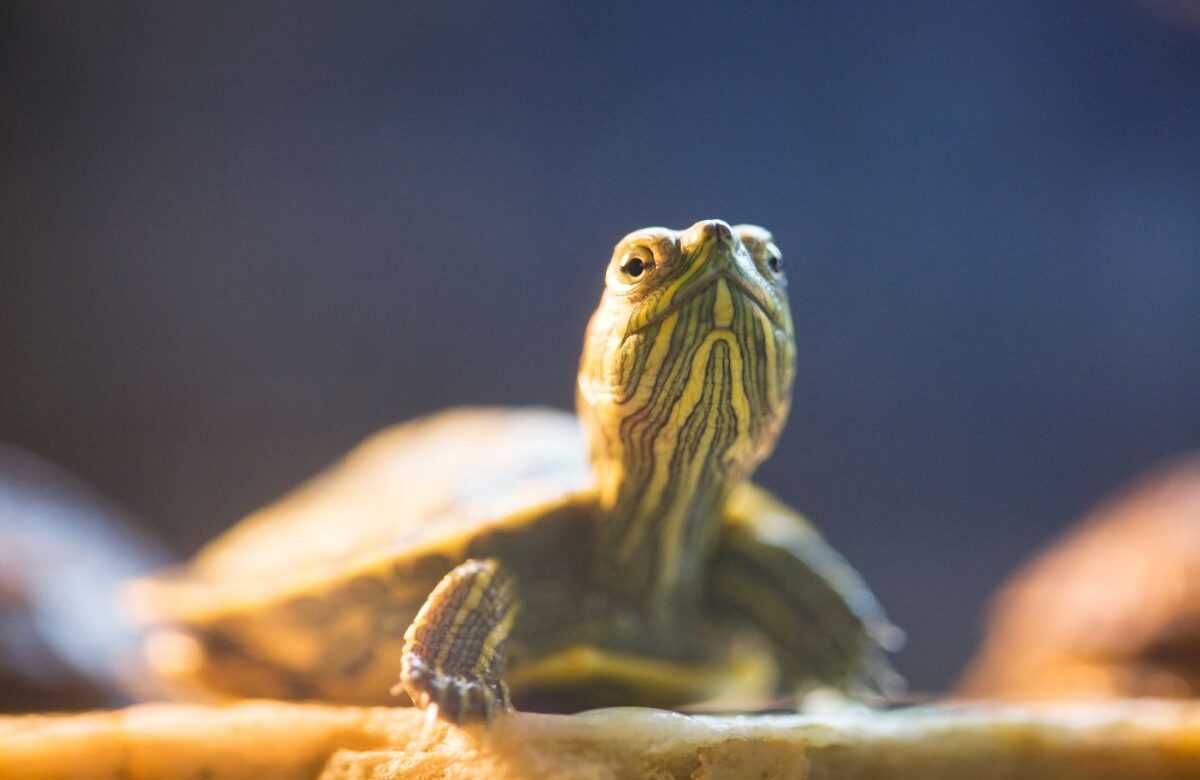You may have wondered if you can keep axolotls and turtles together in the same tank. After all, both animals are aquatic. Therefore, at first glance, keeping Axolotl and Turtles together doesn’t seem like a bad idea.
Unfortunately, there are some important points in the husbandry and behavior that prevent axolotls and turtles from being able to live together. The water temperature requirements alone mean that turtles and axolotls cannot be kept in the same tank.
4 reasons why turtles and axolotls can’ t live together
1. The water temperature
Axolotls are cold water animals and their ideal water temperature is 53 to 68 °F (12 to 20 °C). They should never be in water that is 71 °F (22 °C) or warmer for extended periods of time, this can cause long term damage and severely stresses them out.
Most turtles, on the other hand, come from warm or tropical areas. Because of this, they require an average water temperature of 71 to 77 °F (22 to 25 °C).
The Chinese pond turtle needs 77 to 82 °F (25 to 28 °C) in the summer months.
The Spotted turtle likes it somewhat colder; in winter it needs water temperatures of 60 to 65 °F (16 to 18 °C), with which even an axolotl would feel comfortable. In summer, on the other hand, this turtle species also needs water temperature around 68 to 71 °F (20 to 22 °C).
Since the water temperature is an important factor in the health of axolotl, you unfortunately can’t keep axolotl with animals that need higher temperatures, such as turtles.
2. Light
Another factor that axolotls and turtles don’t agree on is their different requirements for light.
Since the Axolotl’s home lake is covered with floating plants and they often stay near the bottom, they prefer low light and quickly react with stress when it’s too bright.
Turtles, on the other hand, prefer bright light, and it is particularly important for them that the light also contains UV rays. They need the UV rays for vitamin D synthesis so that they can store calcium in their shells.
And since turtles are cold-blooded animals, one of their favorite activities is to sunbathe under a heat lamp.
So in this housing condition, axolotls and turtles have opposing needs.

3. Potential injuries
An additional threat to the axolotl are injuries from the turtles. Turtles tend to bite when they feel threatened and since axolotls, unlike turtles, don’t have a shell or similar protection, they can suffer serious injuries as a result.
Also, some species of turtles are territorial and bite to chase other animals away. This behavior may be met with incomprehension by axolotls, as they are not territorial and thus risk being repeatedly bitten by the turtle for getting too close.
Additionally, some turtles may view axolotls as prey, especially if they are still small.
Depending on the species, turtles are carnivorous, so they only eat meat, or omnivorous, so they eat both plants and meat.
For example, adult Chinese pond turtles eat mostly plants, but their juveniles still eat a very carnivorous diet until they grow larger.
The Spotted turtle is an omnivore at all ages. It feeds on algae, aquatic plants, insects and snails.
So the gills of an axolotl can quickly end up on the turtle’s menu.
4. Danger of Impaction
Another situation in which the axolotl could injure itself is when it tries to eat small turtles.
Axolotls reflexively snap at anything that swims in front of their mouths, but they can’t digest the turtle’s shell or injure themselves just by trying to swallow it.
And because freshly hatched turtles are often under 1 inch (1 to 2 cm) in size and an Axolotl can quickly think that they are a nice snack.
Conclusion
Axolotls and turtles shouldn’t be kept in the same tank. Both are fascinating animals, but their housing conditions are too different to keep them together. In addition, there is also the risk that the axolotl will be seriously injured by the turtle.
Axolotls are best kept alone or with other axolotls, but if you still want to keep other animals in your axolotl tank, cherry shrimp and snails are a good choice. Here you can find articles about how to keep Axolotl with cherry shrimps and snails.

